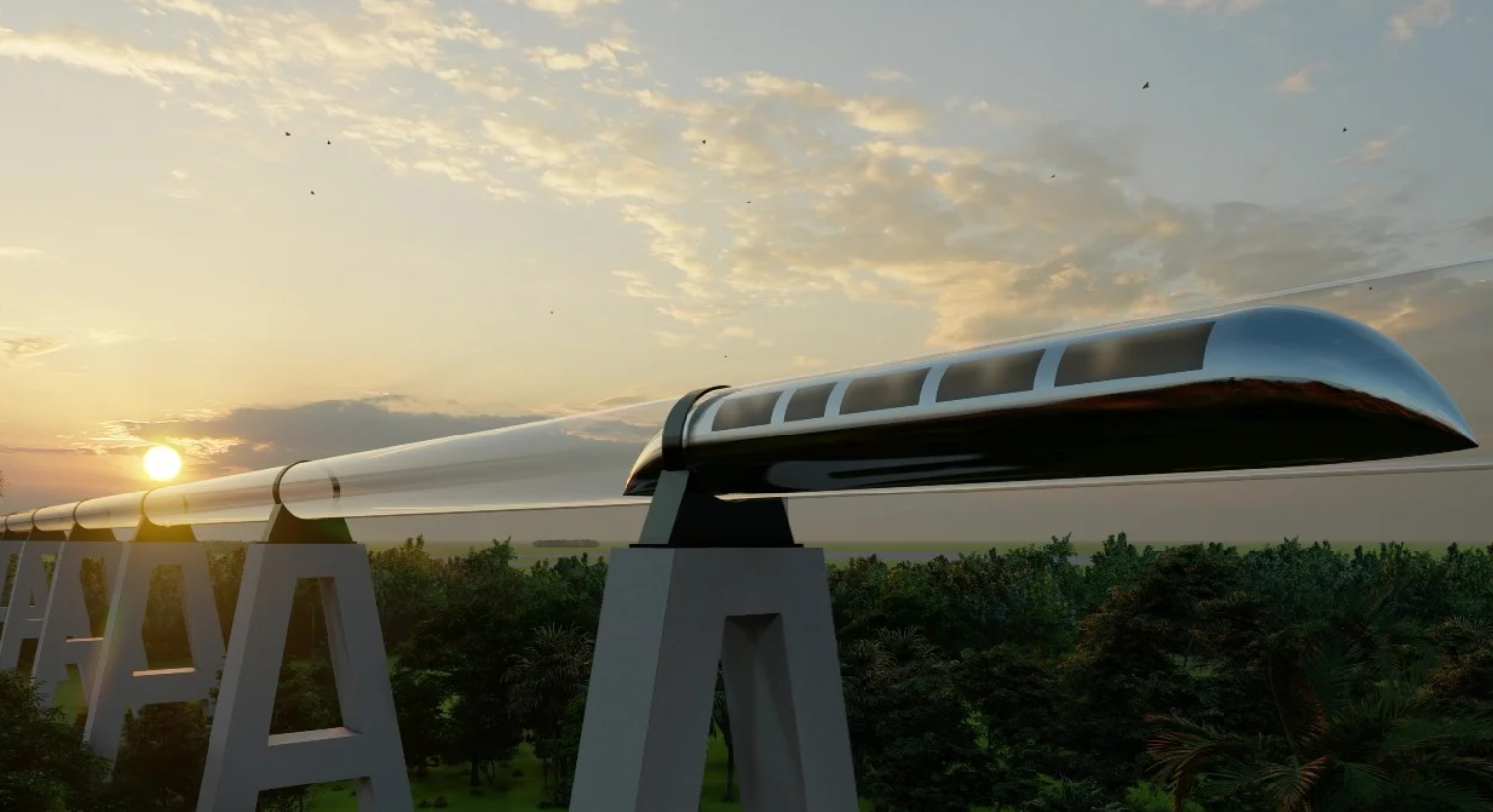The Future of Hyperloop Transportation and High-Speed Rail

The need for transportation drives the progress of humankind, linking people to people, cities to cities and economy to economy as well. So, from horse-drawn carriages to airplanes, every innovation has brought the world smaller one step at a time. You might have heard of two innovative technologies that are currently vying to change the nature of travel: Hyperloop transportation and high–speed rail, both of which are futuristic modes of travel that will be faster, greener, and more efficient.
But what are these systems exactly, if you peel the apps away, how do they work, and what lies ahead for them? The article discusses some of the most tantalizing recent developments in hyperloop and high-speed rail, their disruptive potential and what stands in their way.
🚄 What Is High-Speed Rail?
High-speed rail (HSR) refers to the passenger rail system that runs at much higher speeds in comparison to normal railways, utilizing specialized equipment and infrastructure. While countries such as Japan, France, China, and Germany have gone ahead and developed efficient and reliable high-speed rail networks, such that high-speed trains in the United States did not really achieve what is often regarded as "high-speed" (generally along the lines of such speeds being above 150 miles an hour for most of the developed world).
🧵How High-Speed Rail Works
Trains like these ride on tracks that are different enough to facilitate the trips at peak performance. These are usually electrically powered and are shape-designed to overcome wind drag. The very fastest systems, such as Japan's Shinkansen or China's Fuxing trains, can exceed 217 mph (350 km/h).
✅ Benefits of High-Speed Rail
- Fast Travel: Shortens the duration of the journey from one major city to another.
- Environment-friendly: Uses electricity and generates lower carbon emissions than traveling by air.
- Economic Growth: Increases connectivity, supporting tourism and regional economies
- Provides a relaxed, silent, and consistent drive.
❌ Modern High Speed Rail Challenges
- High Cost: Construction and upkeep of high-speed rail infrastructure can be costly.
- Land Usage: Ideal in large quantity for tracks and stations.
- Political and Legal Hurdles: Whether you are Japan or China, building cross-border HSR systems involves a lot of legal regulations and international agreements.
However, such problems have not stopped the expansion of high-speed rail, especially in nations such as Japan and China that are desperately trying to curb their carbon emissions and upgrade their transportation systems.
What Is Hyperloop Transportation?
The Hyperloop is a new kind of ultra-high-speed transport system dating back to 2013 and introduced for the first time by the entrepreneur Elon Musk. Think of high-speed rail: the Hyperloop is like high-speed rail, but it does everything a few decades faster, and differently.
🔍 How Does Hyperloop Work?
Using magnetic levitation (maglev) system already used in some present-day high-speed trains, hyperloops would see passenger pods travelling through a series of low-pressure vacuum tubes at phenomenal speed. With no air resistance, this could theoretically enable the pods to reach equivalently speeds of 760 miles per hour (1,220 kilometers per hour)—almost the speed of commercial planes!
The technology relies on:
- Low-pressure tubes: Less air drag for better speed
- Maglev: Enables pods to levitate on top of tracks, providing zero friction.
- Electric: Environmentally friendly and highly efficient
Hyperloop Transportation Benefits/Pros
- Speed: Able to trim cross-country trips to mere hours.
- Power Saving: Uses Renewable Sources of energy like Solar.
- Less Congestion: May help traffic on streets and cut airport pressure.
- Save On Maintenance Costs: Fewer moving parts in conventional trains, will further help reduce costs.
❌ Problems with Building Hyperloop
- Experimental Nature of the Technology: the tech is still experimental scope.
- Large Upfront Investment: Creating the necessary infrastructure will come at a high financial cost.
- Safety Considerations: The high speeds involved and the need to maintain near full vacuum environments for extended periods mean that special considerations need to be funneled into the train designs built.
- Back to Regulatory Issues: It would require new laws and safety regulations
Comparing Hyperloop and High-Speed Rail
While both technologies are designed to create a new era of transport, with their own pros and cons,
| Feature | High-Speed Rail | Hyperloop |
|---|---|---|
| Speed | 186–217 mph (300–350 km/h) | Up to 760 mph (1,220 km/h) |
| Technology | Electric-powered trains on tracks | Magnetic levitation in vacuum tubes |
| Environmental Impact | Low emissions, electricity-powered | Extremely low emissions, renewable energy use |
| Infrastructure Cost | High | Very high (still under development) |
| Development Stage | Operational in many countries | Experimental and in testing phases |
| Safety | Proven and reliable | Yet to be fully tested |
Fast-forward several decades, and high-speed rail is still going strong and expanding throughout the world, while hyperloop is still near the experimental stages, though commercial enterprises like Virgin Hyperloop and Elon Musk's The Boring Company are working on it.
Hyperloop and High-Speed Rail: The Future
High-speed rail and hyperloop technologies may both be important for the transport system of the future, but each will most likely be better suited for different regions and travel purposes.
🚄 Next Gen High-Speed Rail
Countries are also pouring money into these trains to expand their high-speed, sustainably powered networks.
Trends to Watch:
- Renewable energy integration: New trains might be powered 100% with green energy.
- Cross-Border Connectivity: Continued EU integration efforts.
- Innovations in Technology: Intelligent ticketing systems, automated trains and AI-driven procedures will enhance efficiency and safety.
🚀 The Future of Hyperloop
Hyperloop has the capacity as a prototype to disrupt the transportation space.
Upcoming Developments:
- Countries including the UAE, the US, and India are looking into hyperloop test routes (pilot projects).
- Testing to the Public: Success stories exist (Virgin Hyperloop, for example), but commercialisation is still many years away.
- Public-Private Partnerships on Feasibility, funding, and research
Which Technology Will Dominate?
Hyperloop is a technology with amazing potential, but it is not likely to supplant the high-speed rail parent any time soon. High-speed rail has the most successful safety record of any of the major modes of transport, the other being more established, efficient modes of transport, and an environmentally friendly one.
Hyperloop, for its part, is more in the realm of the possible future: an ultra-fast, long-range, zero-emissions transport system dependent on overcoming technological and economic hurdles. Perhaps most importantly, it could provide a solution to linking cities that are too far apart for efficient rail travel but too close for air travel to make sense.
🌱 Sustainability and Ecological Impact
Hyperloop and high-speed rail are environmentally friendly alternatives to flying and driving.
- High-Speed Rail: Electricity (especially renewable) has lower embedded carbon.
- Hyperloop: It's meant to be wholly sustainable, drawing energy from solar panels and even running emissions-free while in operation.
Both systems could fulfill a vital role in saving the planet by delivering low-emission solutions to speeding up the pace of decarbonizing air travel and road transport.
Conclusion: An exciting future of transportation
Hyperloop promises to revolutionize transportation for travel, and UIUC says many cities are not going high-speed rail for the speed and sustainability.
Indeed, in a few decades we can have cities linked in a way that just seems improbable — taking travel time from hours across the country in as little as minutes. High-speed rail is the closest thing we currently have to a hyperloop, but hyperloop stands to take this transformative technology to another level.
While both systems are evolutionary at their core, with full implementation still a number of years in the future, high-speed rail and hyperloop could, in theory, shape travel in a more environmentally-friendly, time-effective and connected world as technology matures and global enthusiasm continues to build. It is only the beginning and the potential possibilities are endless.


